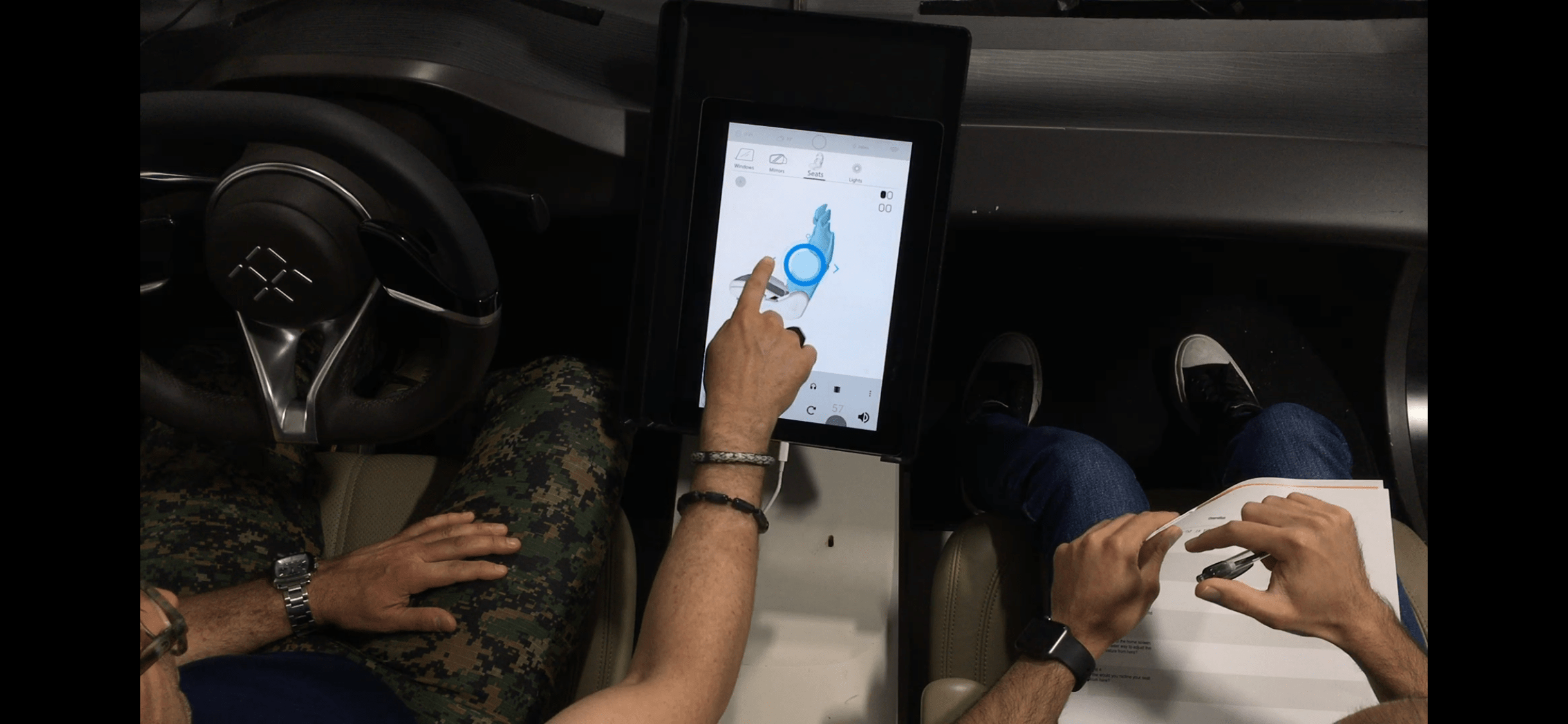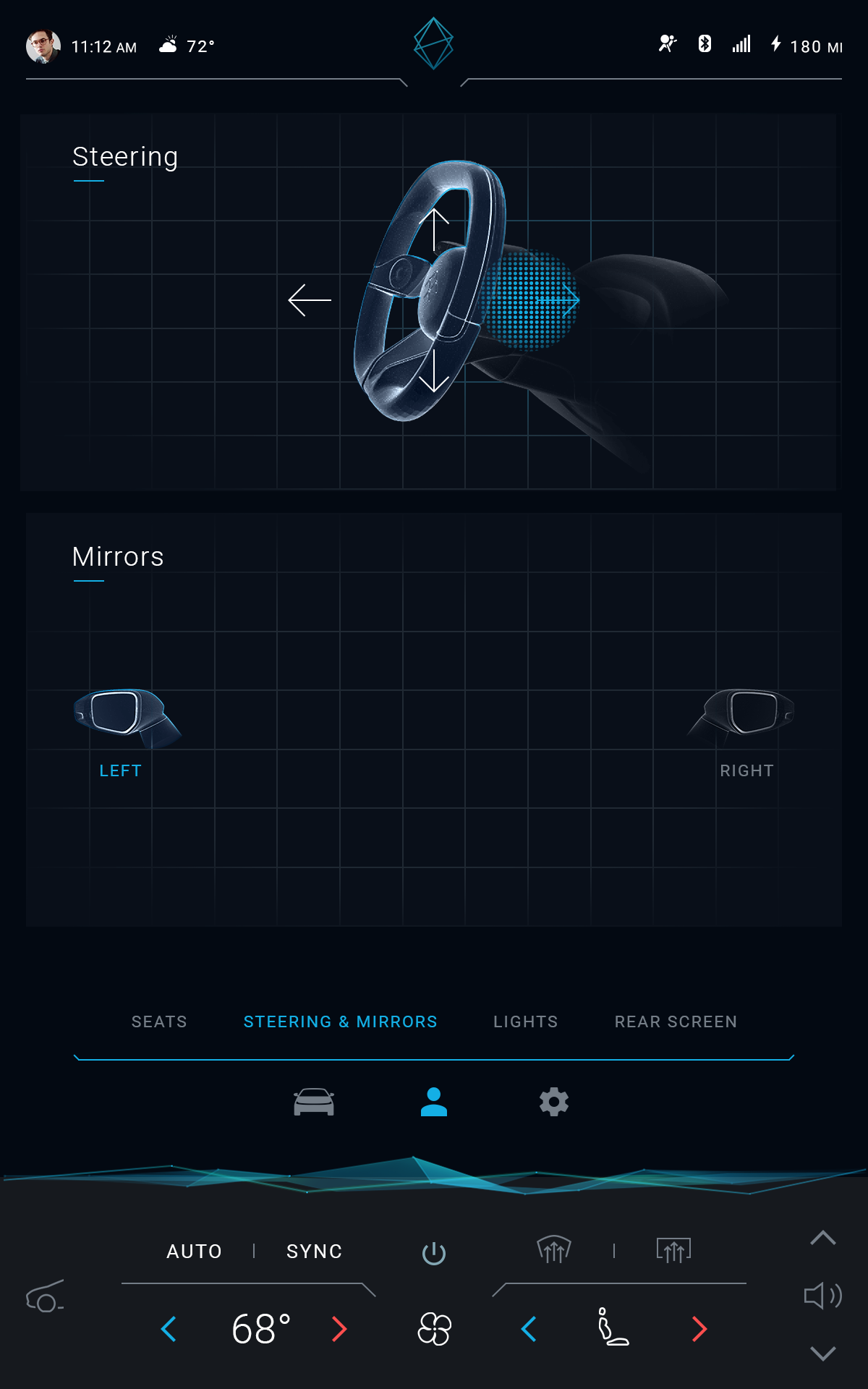Faraday Future
Faraday Future and the FF91
Faraday was a car company built in the vision of a future of driverless cars and super luxury. Its flagship car, the FF91 is designed with premium amenities such as a “Spa Mode” with massaging seats and aroma therapy, data/cell network connectivity better than most landlines, facial recognition for unlocking the doors, a custom built voice AI personal assistant, concierge, fully reclining “zero gravity” seats, a 21” screen for watching movies in the back, and even a screen for the front passenger . This meant a lot of interfaces needed to be designed for the 19 screens in the car, as well as the accompanying mobile “key” app.
My Role
I joined Faraday Future (FF) in mid 2016 as one of four core UX leads in a digital design studio of around 30 designers of varying specialties and skill levels. FF was experiencing rapid growth, and had an aggressive launch target for the flagship vehicle, FF91. For this reason, we each took on as many project as we could handle and started working through them in a very accelerated rate. A few things made this situation uniquely challenging: The product was big, deadline was tight, the software engineering team was in China, the development process was inherently waterfall, and the 19 screens were all of unique sizes and proportions.
UX focused mostly on low fidelities, and we were normally paired with talented visual designers that were working on a design system in parallel to tie all the parts together.
I was product designer lead for
Navigation Systems & Driver Assist
Voice, Personal Assistant
Center Console systems:
Car Controls such as hvac, mirrors, steering wheel, and seats
Passenger Interactive Display screen
Video Player, Music Player, “Spa”, Seat Controls
Car sound design
Seat control
The seats in the FF91 were designed to be ones of complete luxury and comfort. Each seat had over 21 motors to morph to the shape of the person in the seat. The challenges were:
How do you simplify all that complexity into something that is simply and intuitive?
You shouldn’t be a rocket scientist to get the most out of these seats.How does this all work within the ergonomics of a car?
Arm lengths, range of motion, tap target sizes.Safety. Safety. Safety.
Cars and distracted drivers don’t go well together. The driver needs to keep their eyes on the road.
Approach 1: User would hold down either “toggles” or pull “joystick” to adjust. Movement stop on release.
Approach 2: User would drag seat to a position and release.
Approach 2: To really draw attention to how advanced these seats are, we could even give exact increments for a user’s settings.
Approach 3: Combining the first two concepts, a user could use toggle controls for basic movements, then by pulling the joystick up, they could adjust more incrementally.
User testing
In order to figure out which concept works best for intuitiveness and ergonomics, we ran extensive testing in “the Buck”, a dummy prototype of the FF91 with accurate proportions.
To really test the safety aspect of our designs, we’d first give a brief demonstration on how to use the seat adjust feature. Then we’d play a video on a monitor right behind the windshield and ask the participant to perform the same tasks while paying attention to what’s being shown on the monitor.
We soon realized that users wanted what we began to refer to as “god powers”— the ability to tap and drag any part of the seat, maneuver and release. This meant fewer features nested, and the joystick control would need to be available from every position.
THE FINISHED PRODUCT
A interface that matches the elegant and premium feel of the FF91.
Visual Design by:
Chris Wang, Juan Noguerol, Jennifer Lee
Building a universal Car Control UI
In order to make sure the rest of the controls for the other systems in the car (such as side mirrors, steering wheel positioning, and entertainment screen positioning), we had to design a control that could be reused so that the user only has to learn how to use it once.
Creativity Challenge:
What if it was more like the pull-to-refresh interaction in iOS Safari?
Visual Design by:
Chris Wang, Juan Noguerol, Jennifer Lee













